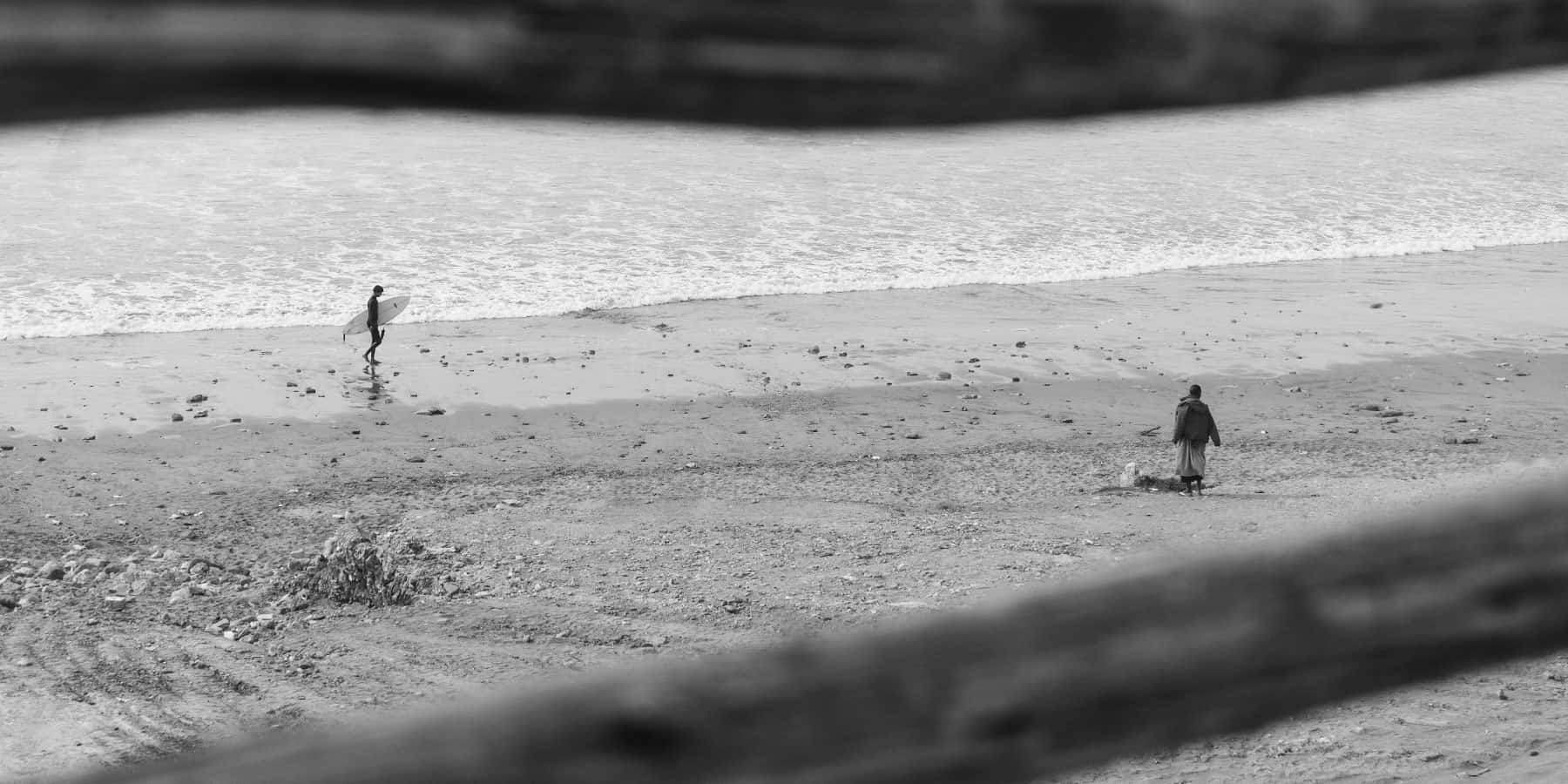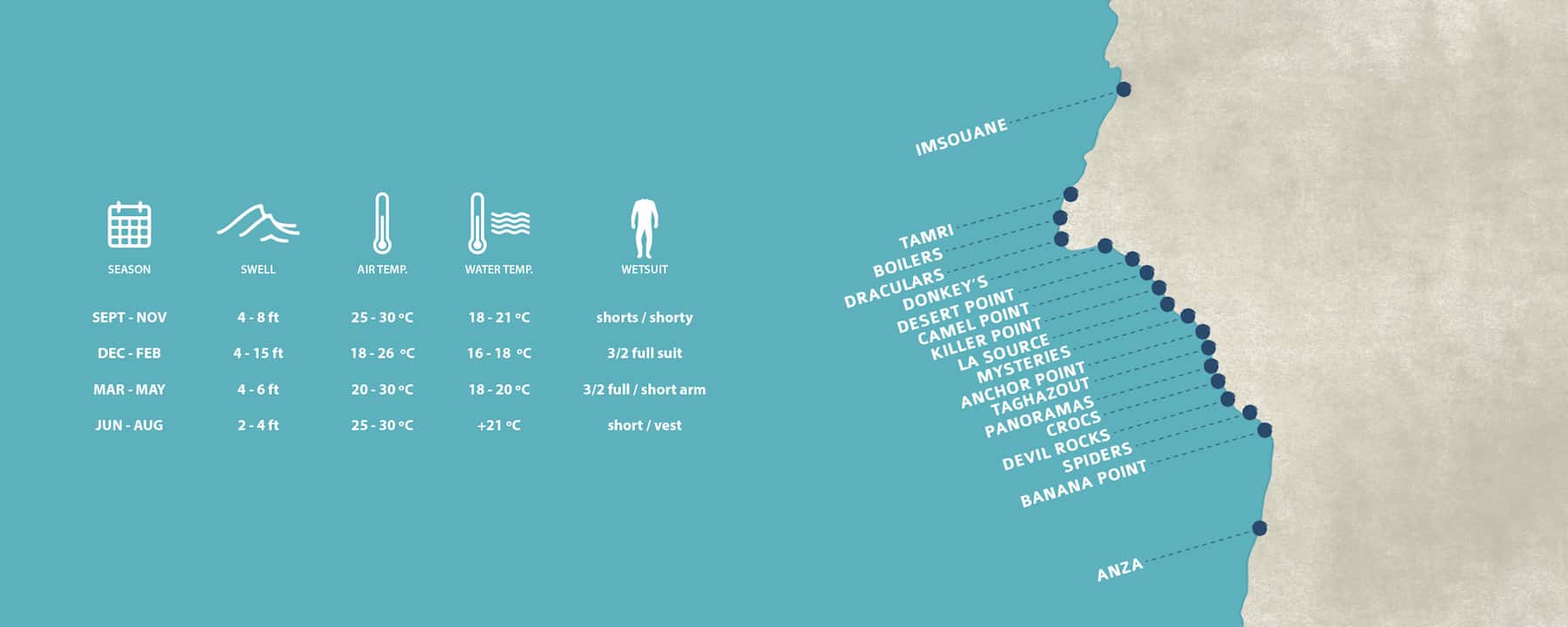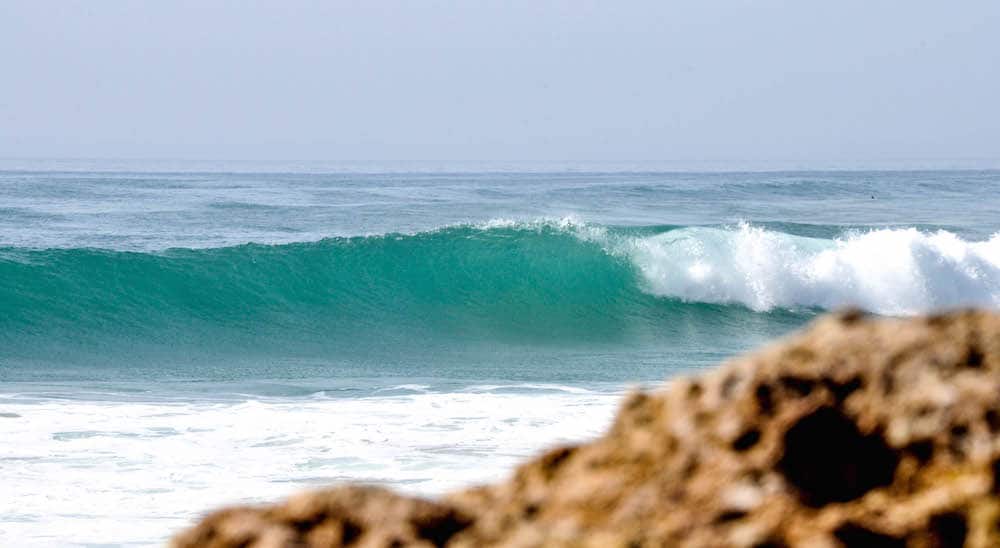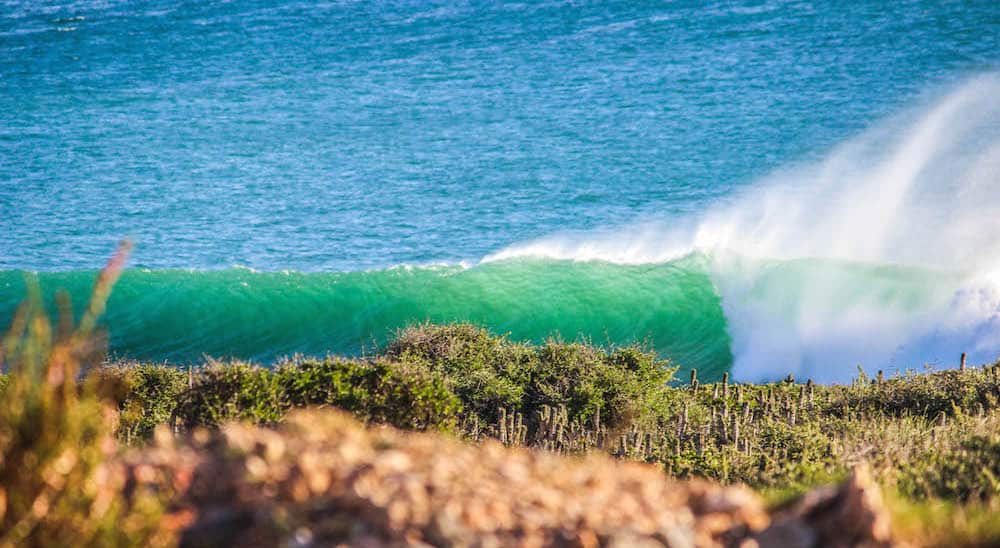MOROCCO SURFING
Despite its Norths African location, Morocco is very much a part of the European surf trail. Located between 20º and 35º latitude with a NW facing coastline, Morocco has all the key elements for an outstanding surf destination. The Taghazout area in the south nestles behind a big cape, which funnels the predominant north winds into a offshore direction. The spots are all easily accessible by road with the waves generally breaking right over flat rock and sand. With balmy winter land temperatures, cheap living and a fascinating cultural diversity, Morocco is a must for the European surf traveller.
The most northerly spot of this zone, is the scenic beach of Imsouane where mellow rights are protected from the wind. Tamri is a wind exposed rivermouth/beach break picking up plenty of swell on small days. On the southern tip of Cape Ghir there is another small surf spot option, called Boilers. This right sucks off a submerged ship boiler and rattles off fast, very closed to the urchin infested rocks. The wind can be offshore on the waves as it whistles down from the mountains on the Cape, but onshore a few hundred meters out to sea!
There are some well protected reefs and a few marginal beachbreaks on the drive south to Killer Point, named after the Killer Whales sometimes seen here. It´s a long righthand point that holds surf up to 15 ft (5m) but be careful of the rocks and caves in front of the take-off zone. A freshwater spring in the rocks marks La Source, a good left and right, which shuts down when the swell picks up. Mysteries is a fickle, high tide right hander which relies on the sand combining with the reef. Next is Anchor Point, a world famous right point break, which holds massive swell and can break for up to 1km, all the way to the town of Taghazout. Anchor’s needs a sizeable swell to produce long section lines, with occasional barrels. In Taghazoute, there´s a reef and sand point, Panorama, which is very protected from the swell. On the nearby Tamraght beach, you will find fun waves, more suited to beginners of surfing and intermediate level. Banana Beach is much the same , but picks up more swell. Next to this is Devil´s Rock, another good wave breaking both left and right that offers steep barrelling sections on the right day.

There are some well protected reefs and a few marginal beachbreaks on the drive south to Killer Point, named after the Killer Whales sometimes seen here. It´s a long righthand point that holds surf up to 15 ft (5m) but be careful of the rocks and caves in front of the take-off zone. A freshwater spring in the rocks marks La Source, a good left and right, which shuts down when the swell picks up. Mysteries is a fickle, high tide right hander which relies on the sand combining with the reef. Next is Anchor Point, a world famous right point break, which holds massive swell and can break for up to 1km, all the way to the town of Taghazout. Anchor’s needs a sizeable swell to produce long section lines, with occasional barrels. In Taghazoute, there´s a reef and sand point, Panorama, which is very protected from the swell. On the nearby Tamraght beach, you will find fun waves, more suited to beginners of surfing and intermediate level. Banana Beach is much the same , but picks up more swell. Next to this is Devil´s Rock, another good wave breaking both left and right that offers steep barrelling sections on the right day.
A little bit down, just before Agadir, is Anza, where we have one of our Surf Houses in Morocco, this charming village is the most consistent spot in all the area. Don’t expect to get much surf in Agadir itself, just when there are super big swells and depending the direction. For a change of scenery, drive down to Tifnit, less than one hour south of Agadir, there are really good uncrowded waves.
Morocco’s coastline has the straightest swell exposure in the North Atlantic. The NW exposed beachbreaks can suffer from a swell excess, but that´s when the pointbreaks and sheltered spots are surfed. In Winter, tradewinds from the NE will make light to moderate cross-shores at most spots, whilst SW facing spots like Taghazout will be offshore. Most of the country’s top surf spots are centered around Agadir and Taghazout, where the average December sea temperature is around 64.5°F/ 18°C. Therefore, even in winter, a thin wetsuit is usually enough to keep out the cold. Sea temperatures vary between 16 and 22°C/61 to 72°F. Morocco’s central surf zone is a semi-tropical venue. The Winter climate gives warm days, chilly nights and some rainfall.

Morocco’s coastline has the straightest swell exposure in the North Atlantic. The NW exposed beachbreaks can suffer from a swell excess, but that´s when the pointbreaks and sheltered spots are surfed. In Winter, tradewinds from the NE will make light to moderate cross-shores at most spots, whilst SW facing spots like Taghazout will be offshore. Most of the country’s top surf spots are centered around Agadir and Taghazout, where the average December sea temperature is around 64.5°F/ 18°C. Therefore, even in winter, a thin wetsuit is usually enough to keep out the cold. Sea temperatures vary between 16 and 22°C/61 to 72°F. Morocco’s central surf zone is a semi-tropical venue. The Winter climate gives warm days, chilly nights and some rainfall.








